More than 150 insulating glass lines with Ködispace 4SG in operation
It is clear that to continually improve the energy efficiency of buildings and to reduce CO2 emissions insulating glass utilizing high performance warm edge spacer system technology is absolutely essential. That is why more and more insulating glass manufacturers count on the specialized Warm Edge technology from adhesives and sealants manufacturer H.B. Fuller | KÖMMERLING. The Ködispace 4SG system, dispensed from a drum is key to highly efficient, economical, and fully automated insulating glass production and most importantly future proofing the next generation of insulating glass design and production.
Energy efficiency is recognized as one of the main functions of modern building design both from an economic and an environmental perspective. As a result, there is little doubt that building standards and regulations will become ever more stringent in the coming years. This focus extends not only to newbuild projects but also to the renovation of existing properties. According to the VFF (German Window and Facade Association) and BF (German Flat Glass Association), 40 percent of existing windows require replacement in 2021. In order to satisfy this perpetually growing demand for high performance insulating glass, manufacturers are installing automated production lines applying the latest, highly durable reactive warm edge spacer technology from H.B. Fuller | KÖMMERLING: In the last five years the number of production lines using the Ködispace 4SG sealant, patented in 2012, has doubled and currently, there are over 150 production lines in operation throughout the globe.
The “Rufus 2.0” project – ultra-modern building complexes in Seattle
Rufus is still an important part of the Amazon story. You can tell by the fact that the online shipping giant gave its modern new building project the name “Rufus 2.0”, which was completed last year. “The Spheres” glass igloos are certainly one of the project’s most spectacular buildings. The three interconnected domes are reminiscent of the Eden greenhouse in Cornwall, a botanical garden in a class of its own. The counterpart in Seattle serves as a lounge and greenhouse and is the new landmark of the emerging metropolis. Large glass fronts were not only used for “The Spheres”, but also for the numerous high-rise buildings on the Amazon site – for example the “Day 1” and “Doppler” glass towers.
Block 18 was also built as part of “Rufus 2.0”. It is a 17-storey building in the Denny Triangle neighbourhood and houses some 36,046 square metres of office space. Block 18 was designed by the Seattle-based Graphite Design Group an architectural firm based on the model of an urban treehouse. One of the main features of the high-rise building is its treehouse staircase. From the outside, it looks as if this wooden staircase, which zigzags up 17 floors, is holding together or connecting the two glass parts of the building. Construction work began in 2018 and the office complex has been completed for a year and a half.
The Durable System from a Single Source
Ködispace 4SG reactive thermoplastic spacer (TPS) forms a chemical bond to both the glass and the secondary sealant, resulting in an extremely stable and flexible edge seal. The result is a functional warm edge that far exceeds current global industry requirements for both moisture vapor transmission resistance and gas tightness. This functional chemistry ensures high thermal performance of the insulating glass elements for many decades, even under extreme climatic and mechanical loads. Durability is further guaranteed by the manufacturer's tested and compatible sealant combinations. The flexibility, mechanical stability and resulting long term durability of the Ködispace 4SG reactive thermoplastic spacer system is also repeatedly proven by H.B. Fuller | KÖMMERLING through intensive material tests, component tests and finite element analyses.
Fully Automated Production Lines
CNC-controlled application process of Ködispace 4SG also offers many advantages for the insulating glass industry. A warm-edge TPS system replaces the combination of spacer, desiccant and primary sealant components found in conventional spacer systems with just one robot applied solution. The production of these insulating glass units runs fully automatically on one single line. Robot application of both spacer and secondary sealant enables instant automatic switching between different spacer thickness and ensures incredibly accurate spacer alignment across double glazed or multi-cavity assemblies. With Ködispace 4SG delivered in a drum, storage becomes easier, safer and requires less space, material wastage is greatly reduced resulting in a much lower inventory cost for the processor / manufacturer. Additionally, Ködispace 4SG Warm Edge technology is designed for structural glazing applications including facades with cold-bent glass. H.B. Fuller | KÖMMERLING also supports innovative customer projects, providing technical design support and expertise through calculations for joint dimensioning or finite element analyses based on material laws developed in-house. Dr. Christian Scherer, Head of Business Development Glass at H.B. Fuller | KÖMMERLING, is delighted with the continued growing contribution to environmental design and sustainable manufacture and points out that, "Ködispace 4SG provides the industry with a unique warm-edge spacer system applied with full automation that can be used to produce high performance insulating glass units for a wide range of applications from windows to facades, whilst ensuring cutting edge durable gas-tightness and maximum design freedom."
.
About H.B. Fuller | KÖMMERLING
Since 2017, Kömmerling Chemische Fabrik GmbH has been part of the US adhesives group H.B. Fuller | KÖMMERLING. The world’s largest supplier of adhesives and sealants covers versatile and demanding adhesive and sealant applications with its three business areas – Engineering Adhesives, Construction Adhesives and Hygiene, Health and Consumable Adhesives – which are used in a range of industries such as electronics, hygiene, medicine, transport, construction and renewable energies. The international group generates sales of of close to 3 billion US dollars and has 6,500 employees serving customers in more than 125 countries. The Pirmasens site has become the “Technology Centre of Excellence” for insulating glass applications and is responsible for the research and development of new products and application fields as well as advancing existing expertise.
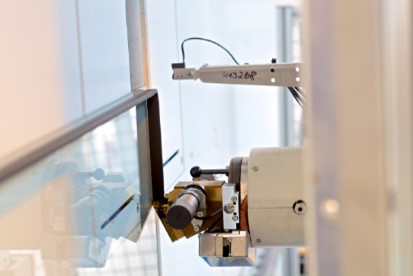

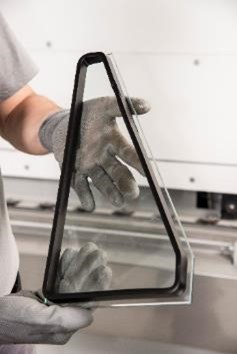
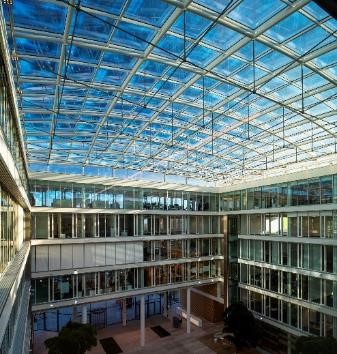
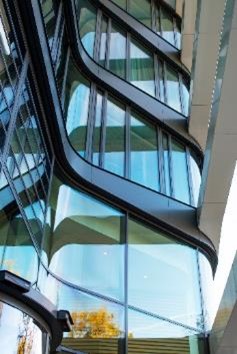
Weitere Informationen und Belegexemplar an:
Kömmerling Chemische Fabrik GmbH
Alexandra Rohr
Zweibrücker Str. 200
D-66954 Pirmasens
Image credit: Kömmerling Chemische Fabrik
Spectacular event location features the Warm Edge system
from H.B. Fuller | KÖMMERLING
Glass parallelograms for the Sphere in Las Vegas
The Sphere is now acknowledged as the world’s largest spherical structure. The new event centre in the casino city of Las Vegas, USA, is attracting worldwide attention with its sensational LED outer shell. The structure also conceals insulating glass units in the form of parallelograms. They are equipped with the robust and exceptionally durable Warm Edge system from sealant and adhesive manufacturer H.B. Fuller | KÖMMERLING, which enables tremendous design freedom thanks to robot-assisted production.
“A truly stunning event location”, “the largest LED screen of all times”, “the most expensive building in the city” or simply “the next World Wonder” – the Sphere in Las Vegas, USA, is triggering exuberant reactions all over the world. The new event centre is located east of the famous Las Vegas Strip close to the Venetian Resort luxury hotel – and now plays a significant role in shaping the appearance of the downtown area. With the dimensions of the giant sphere at 112 metres high and 157 metres wide it surpasses those of all existing spherical structures. Even New York’s Statue of Liberty or the twin towers of Munich’s Frauenkirche could disappear under the dome. The Sphere, however, is being celebrated as the new iconic landmark of the Las Vegas skyline primarily for what is happening on its shell. It is almost entirely constructed as an LED display and first demonstrated its breathtaking capabilities on 4 July 2023, America’s Independence Day when videos of the sensational light show went viral on social media worldwide.
A 2.3 billion US dollar mega-project
Since then, some 1.2 million individually controllable LED elements have been illuminating the sky of the Mojave Desert in Nevada and displaying every conceivable form of light animation over an area of 54,000 square metres. At times a basketball, a globe, fireworks or even an underwater world, the possibilities of the Sphere’s programmable lighting are virtually inexhaustible and nothing less than awe-inspiring. Architecture becomes light, shapes appear to dissolve and reassemble, entertainment and architecture merge into one.
The Sphere is the brainchild of the American Madison Square Garden Company (MSG), which brought numerous construction and technology partners on board to plan and implement the project. The building has been under construction on and off since 2018 and was completed in the summer of 2023 – a mega-project that cost roughly 2.3 billion US dollars.
Double spherical construction with LED technology outside and inside
The structure itself comprises two spheres nested inside each other with the geographical shape resting flattened on the ground. Underneath the LED-clad steel skeleton of the outer skin, the so-called exosphere, there is a smaller sphere, also built on the basis of a steel skeleton, but covered with an additional concrete coating. The interior of the building resembles an amphitheatre with a stage and steeply rising tiers. The cantilevered auditorium extends over nine storeys and is also lined with an LED screen that spreads almost entirely over the sides and the domed roof. Expansive video projections combined with a huge sound system create an immersive visitor experience that is further enhanced by haptic experiences such as moving seats, scents and wind. In the future, the Sphere will offer some 20,000 seats for exceptional live events. For the grand opening on 29 September 2023, the Irish rock band U2 will be doing the honours.
Insulating glass units in unusual shapes
In addition to the LED elements, hundreds of state-of-the-art insulating glass units are built into the overall structure. The majority of them do not feature the usual 90-degree corner angles, but instead correspond to the shape of a parallelogram. This was not only challenging when producing the units, but also when it came to ensure the integrity of the glass’ edge seal. Insulating glass units with the Warm Edge system from H.B. Fuller | KÖMMERLING were used for the Sphere. The reactive thermoplastic spacer system boasts a distinctive appearance, maximum energy efficiency and a long service life. Warm Edge technology achieves this thanks to its unique structure: It consists of only one sealant, which is applied fully automatically by a robot and chemically bonds with both the glass surface and the silicone secondary sealant. As a result, the entire edge seal ‘fuses’ into a flexible, exceptionally resilient unit with superb gas-tightness and maximum service life.
Durable Warm Edge insulation from H.B. Fuller | KÖMMERLING
The durability of the edge seal is paramount – especially under high thermal loads and in extreme climatic zones such as Las Vegas. The insulating glass units need to remain energy-efficient over the long term and insulate the building from heat penetration or heat loss. Insulating glass with the elastic Warm Edge system from H.B. Fuller | KÖMMERLING has proven itself to be extraordinarily robust, resilient and durable in this respect.
At the same time, the precise, robot-assisted application of the black sealant enables glass units with unusual shapes, such as the parallelograms at the Sphere, to be produced fully automatically and consistently achieving the highest quality standards. The shape and size of the insulating glass are virtually irrelevant. Despite very acute angles, organically flowing shapes at the edges of the glass or complex geometries – this production method ensures complete design freedom. Moreover, the insulating glass units do not exhibit any misalignment of the Warm Edge and offer an unobstructed view, since the black edge seal prevents any disturbing light reflections from appearing in the cavity between the panes. The Warm Edge system from H.B. Fuller | KÖMMERLING is perfectly suited for worldwide use in glass architecture with the most ambitious requirements.
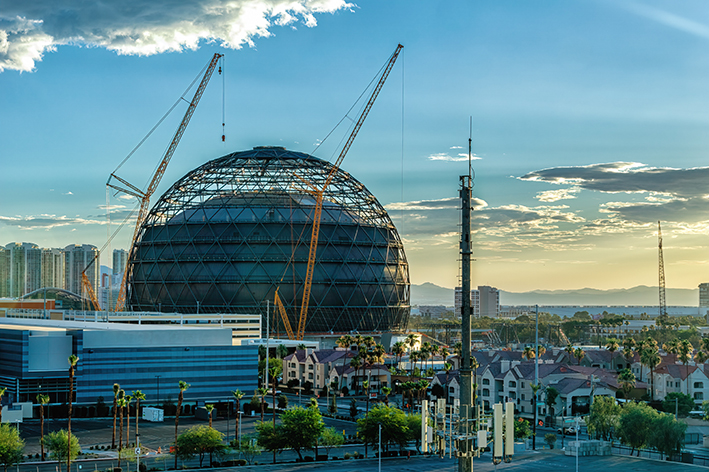
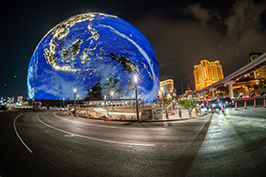
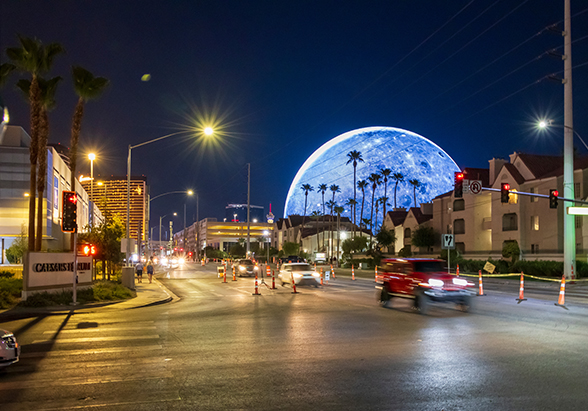

About H.B. Fuller
Kömmerling Chemische Fabrik GmbH has been part of H.B. Fuller group for over six years. Since 1887, the US-based company has been a leading global adhesives provider focusing on perfecting adhesives and sealants to improve products and lives. With fiscal 2022 net revenue of $3.75 billion, H.B. Fuller’s commitment to innovation and sustainable adhesive solutions brings together people, products and processes that answer and solve some of the world's biggest challenges. Our reliable, responsive service creates lasting, rewarding connections with customers in electronics, disposable hygiene, medical, transportation, aerospace, clean energy, packaging, construction, woodworking, general industries and other consumer businesses. And, our promise to our people connects them with opportunities to innovate and thrive. Learn more: https://www.hbfuller.com/.
Weitere Informationen und Belegexemplar an:
Kömmerling Chemische Fabrik GmbH
Alexandra Rohr
Zweibrücker Str. 200
D-66954 Pirmasens
Image credit: Kömmerling Chemische Fabrik
Ultra-modern design and sustainability thanks to the warm-edge system from H.B. Fuller | KÖMMERLING
In Seattle’s South Lake Union neighbourhood, one office building follows the next. But these aren't just any offices. This is where the headquarters of online giant Amazon are located. Between modern cafés and restaurants, 40 office buildings rise from the ground. In 2021, the company expanded its headquarters and built more modern glass buildings as part of the “Rufus 2.0” project – including Block 18. This office building was designed in the image of an urban tree house. A wooden staircase winds through the centre of the building, immediately catching the eye from the outside thanks to the glass façade. These glass elements were brought to life using the Ködispace 4SG warm-edge system from H.B. Fuller | KÖMMERLING to meet the high specifications in terms of excellent energy efficiency, durability and ultra-modern design.
There is hardly another inner city in North America that is as dominated by one single company as Seattle. Ten years ago, the Amazon online mail order company moved to the South Lake Union neighbourhood – not far from the eponymous park and lake. Today, the headquarters not only encompass 40 buildings, there are modern cafés, restaurants and food trucks on every corner. An Amazon tram even takes employees and visitors to the very centre of the Amazon headquarters. There, at the heart of the city, one office building follows the next. Names are virtually always written in large block letters on the façades of the Amazon buildings. Sometimes a building is named after Fiona, the first Kindle e-book reader, sometimes after the previous owner of the building, the “Van Vorst” mattress factory.
There is a very special story behind the “Rufus” building. Amazon’s first campus dog was a Welsh Corgi named Rufus. He belonged to Amazon’s former editor-in-chief and chief engineer and would accompany him to the office every day. The four-legged friend was affectionately dubbed “Amazon’s smallest volunteer” and evolved into an unexpectedly productive member of the team. For example, employees let Rufus click the computer mouse with his paw to launch some of the very first Amazon pages. The online giant is still a dog-friendly employer to this day: at the Seattle headquarters, every day is an open day for dogs. Employees can bring their four-legged friends to work, there are special dog parks and it is not unusual to find food and water bowls in the lobby areas of the buildings.
The “Rufus 2.0” project – ultra-modern building complexes in Seattle
Rufus is still an important part of the Amazon story. You can tell by the fact that the online shipping giant gave its modern new building project the name “Rufus 2.0”, which was completed last year. “The Spheres” glass igloos are certainly one of the project’s most spectacular buildings. The three interconnected domes are reminiscent of the Eden greenhouse in Cornwall, a botanical garden in a class of its own. The counterpart in Seattle serves as a lounge and greenhouse and is the new landmark of the emerging metropolis. Large glass fronts were not only used for “The Spheres”, but also for the numerous high-rise buildings on the Amazon site – for example the “Day 1” and “Doppler” glass towers.
Block 18 was also built as part of “Rufus 2.0”. It is a 17-storey building in the Denny Triangle neighbourhood and houses some 36,046 square metres of office space. Block 18 was designed by the Seattle-based Graphite Design Group an architectural firm based on the model of an urban treehouse. One of the main features of the high-rise building is its treehouse staircase. From the outside, it looks as if this wooden staircase, which zigzags up 17 floors, is holding together or connecting the two glass parts of the building. Construction work began in 2018 and the office complex has been completed for a year and a half.
Robust, resilient and durable thanks to warm-edge system
As with many of the ultra-modern buildings on the Amazon campus in Seattle, Block 18 also draws the eye with its spectacular glass façades. To meet the high demands for outstanding energy efficiency, reliable sealing, long-lasting stability of the façade and ultra-modern appearance, the glass elements were realised with the Ködispace 4SG warm-edge system from H.B. Fuller | KÖMMERLING. The reactive thermoplastic spacer for insulating glass ensures the highest energy efficiency and maximum service life. “Insulating glass with Ködispace 4SG has proven to be exceptionally robust, resilient and durable,” explains Dr Christian Scherer, Head of Business Development Glass at H.B. Fuller | KÖMMERLING.
The use of the elastic and reactive Ködispace 4SG thermoplastic spacer creates an edge seal that is flexible and gas-tight over the long term. The chemical bond of the material to both glass and the silicone secondary sealant ensures an extremely stable system. As a result, Ködispace 4SG not only compensates for the loads that occur due to the temperature differences between summer and winter that are common on the American West Coast, it also reliably keeps out moisture and wind. This is especially important in Seattle, where the climate tends to be dry in summer and humid in the other months. The functionality of the glass is permanently maintained thanks to the warm-edge system. This not only ensures a comfortable environment in the offices, but also sustainably reduces heating and air-conditioning costs in the long term.
The space between the panes is virtually invisible
The warm-edge solution also excels in terms of design. The spacer system is applied to the insulating glass fully automatically with an application robot. This enables high-precision production down to the tenth of a millimetre, even with multiple panes – without any of the disruptive offsets experienced with conventional spacer profiles. Ködispace 4SG also prevents unpleasant light reflections. While metal spacers detract from the appearance due to their shiny surface, the matt black Ködispace 4SG reflects the frame colour and makes the space between the panes virtually invisible – for a perfectly unobstructed view.
“Amazon has built its sprawling headquarters in Seattle with more than 40 state-of-the-art buildings. We are pleased to have contributed to giving one of these office complexes the flawless look it deserves with our warm-edge system,” says Dr Christian Scherer.
About H.B. Fuller | KÖMMERLING
Since 2017, Kömmerling Chemische Fabrik GmbH has been part of the US adhesives group H.B. Fuller | KÖMMERLING. The world’s largest supplier of adhesives and sealants covers versatile and demanding adhesive and sealant applications with its three business areas – Engineering Adhesives, Construction Adhesives and Hygiene, Health and Consumable Adhesives – which are used in a range of industries such as electronics, hygiene, medicine, transport, construction and renewable energies. The international group generates sales of of close to 3 billion US dollars and has 6,500 employees serving customers in more than 125 countries. The Pirmasens site has become the “Technology Centre of Excellence” for insulating glass applications and is responsible for the research and development of new products and application fields as well as advancing existing expertise.
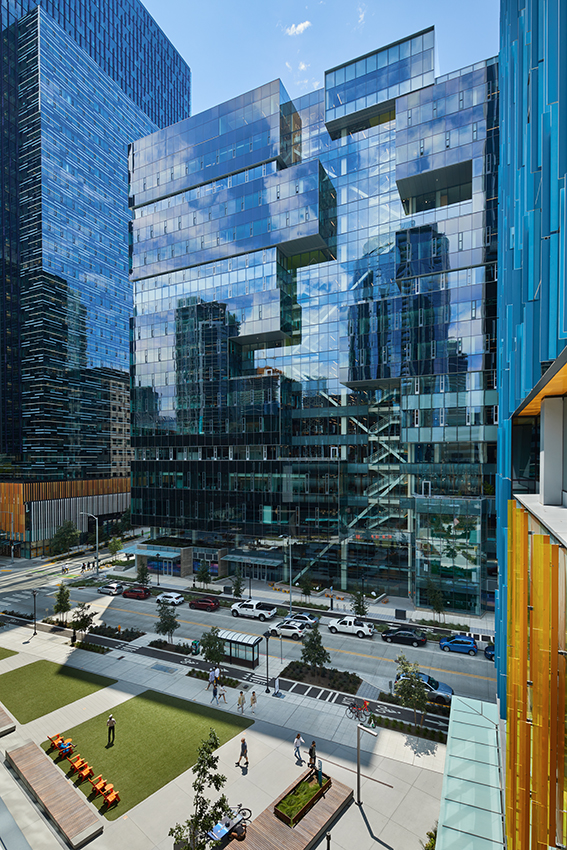

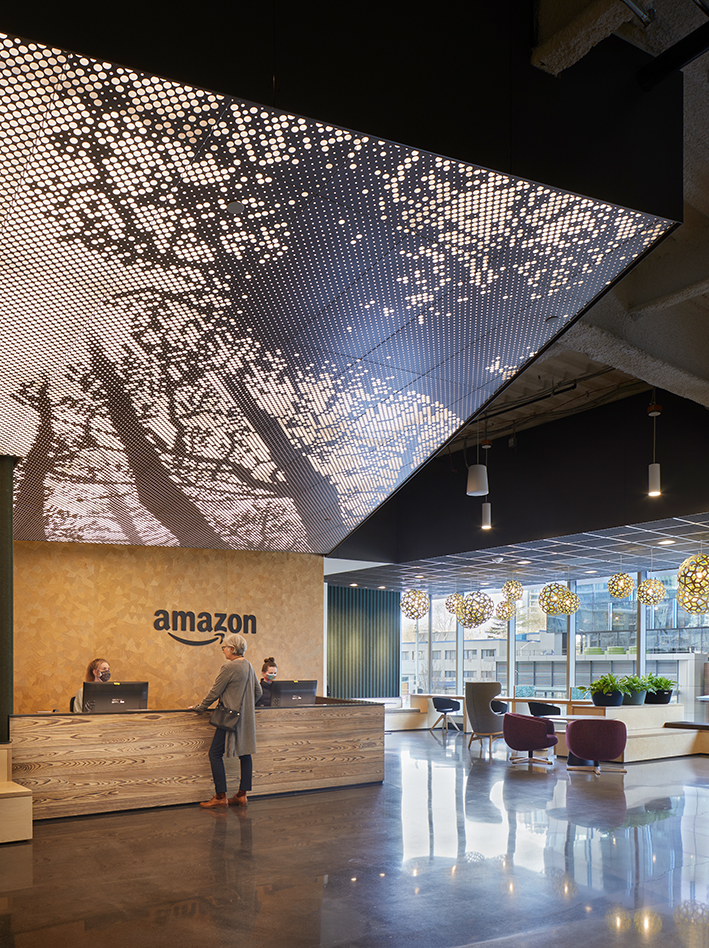
Weitere Informationen und Belegexemplar an:
Kömmerling Chemische Fabrik GmbH
Alexandra Rohr
Zweibrücker Str. 200
D-66954 Pirmasens
Image credit: Kömmerling Chemische Fabrik
Still under construction: the CIBC Square urban development project in Toronto, Canada
In Canada’s megacity of Toronto, one of the most fascinating and largest construction projects is currently in progress. The new, sustainably planned CIBC Square with its two soaring glass towers will be shaping the skyline of the Canadian business centre and contributing to positive urban development for decades to come. The energy-efficient Warm Edge system from adhesive and sealant manufacturer H.B. Fuller | KÖMMERLING was used in the construction of the distinctive glass diamond shapes in the façades.
The first of the two 250-metre-high glass towers has already been completed. The second tower is currently under construction and is expected to be finalized in 2024. Wilkinson Eyre Architects from the UK are responsible for the striking design, while Toronto-based Adamson Associates Architects is in charge of the execution. A key project facet is the visionary redevelopment of a 33,000 square metre campus which includes a transport hub between Toronto’s financial district and the Lake Ontario waterfront. Previously separated from each other by the wide Union Station, the twin towers positioned to the north and south of the tracks will be connecting the two neighbourhoods in the future through a public park spanning high above the railway lines. On an area of one hectare, a nature-like oasis for meetings, cultural events and local recreation will be created on the fourth-floor level of the towers – with a sweeping view over the lake.
Visionary urban development
The towers themselves not only house the new Canadian Imperial Bank of Commerce (CIBC) headquarters, but also top-tier office and conference space for international firms. A podium with a spacious entrance lobby over several levels, housing retail, upscale dining and leisure facilities is also included. A new bus terminal for intercity lines is located in the southern tower which has already been built. Within the bases of both skyscrapers are various walkways, platforms and bridges that link all modes of transportation intersecting in the CIBC Square, including Toronto’s underground PATH pedestrian network, creating access to the waterfront.
With the development of this corporate campus, Toronto is opening up an area that will become a landmark project for the entire city through the successful combination of architecture, transportation infrastructure and its lakeside location. The CIBC Square was not only conceived as an exceptional working environment, but also as a space for communication and community, as an experiential environment and a recreational area. This includes the sustainable, ecological concept of the now interconnected public transport, as well as the sustainably planned architecture of the glass towers in compliance with international LEED® Platinum and WIRED & WELL Building™ standards.
Glass façades with highly efficient Warm Edge technology
Both 49- and 50-storey towers have a slightly fluted glass façade on all sides. Integrated into the exterior façade are diamond-shaped, prism-like backlit motifs, which are repeated at intervals of 10 storeys and contrast with the surrounding buildings as a result of their vertical scaling. To meet the high standards of excellent energy efficiency, 100-percent reliable impermeability and long-lasting stability of the structural glazing façade, the glass elements were equipped with the Warm Edge system from manufacturer H.B. Fuller | KÖMMERLING. This spacer system boasts exceptional gas-impermeability and longevity, even in the face of extreme temperature differences. The unique structure of the Warm Edge spacer technology is behind this outstanding performance: it consists of only one component, which is applied entirely automatically by robot and which chemically bonds with both the glass surface and the silicone secondary sealant. As a result, the entire edge seal literally “fuses” into a flexible and resilient unit offering unmatched energy efficiency and maximum service life. At the same time, the precise application of the black sealant creates a distinctively clean appearance and prevents any disturbing light reflections from arising in the space between the panes.
As part of the full-surface glass façades, the Warm Edge system from H.B. Fuller | KÖMMERLING makes a decisive contribution to the CIBC Square’s energy-efficient, sustainable architecture and beautifully demonstrates how innovative and environmentally friendly modern glass architecture can be.
Weitere Informationen und Belegexemplar an:
Kömmerling Chemische Fabrik GmbH
Alexandra Rohr
Zweibrücker Str. 200
D-66954 Pirmasens
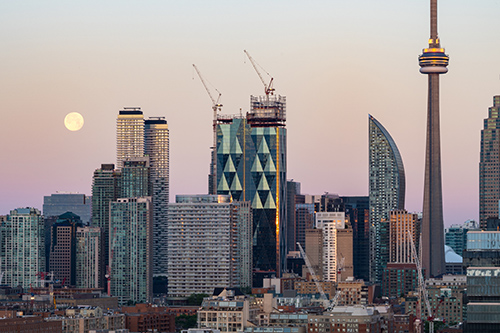
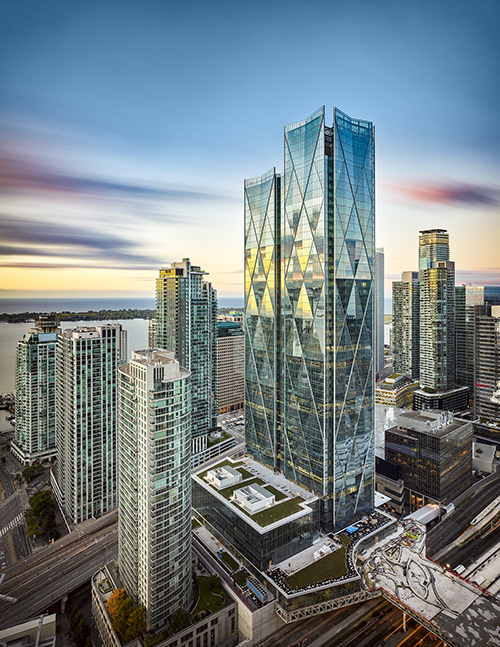
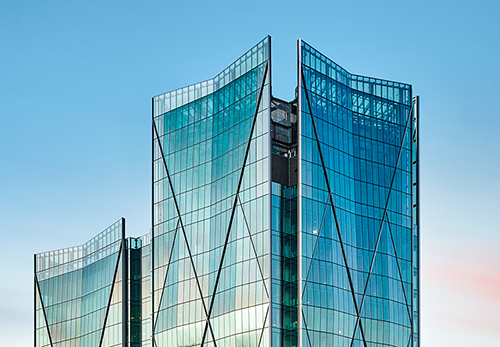
Building plate:
Project: CIBC Square, Toronto, Canada
Client: Ivanhoé Cambridge / Hines
Architectural design: Wilkinson Eyre Architects (WEA)
Architectural execution: Adamson Associates Architects
Completion date: 2024
Purpose: Banks, offices, conferences, gastronomy, culture, park
Façade construction: SOTAWALL, Tagg Industries
Glass elements: VIRACON®
Spacer system: Warm Edge from H.B. Fuller | KÖMMERLING
About H.B. Fuller | KÖMMERLING
Since 2017, Kömmerling Chemische Fabrik GmbH has been part of the US H.B. Fuller | KÖMMERLING adhesives group. With its three business areas – Engineering Adhesives, Construction Adhesives, and Hygiene, Health and Consumable Adhesives – the world's largest supplier of adhesives and sealants covers versatile and demanding adhesive and sealant applications used in a range of industries, including electronics, hygiene, medical, transportation, construction and renewable energies. The international group has sales of some $3 billion and 6,500 employees serving customers in more than 125 countries. The Pirmasens site has become the "Technology Center of Excellence" for insulating glass applications and is therefore responsible for research and development of new products and application fields as well as for advancing existing expertise.
Bildnachweis: Kömmerling Chemische Fabrik
Kömmerling's liquid composite partner in Estonia, Andrese Klaasi, is manufacturing and installing replacement panels for the famous War of Independence Victory Monument, located in Freedom Square,Tallinn, Estonia. Illuminated from inside, the structure, known as ”Liberates”, provides a stunning centrepiece to the ancient capital city.
Damage to the monument over the last four years has led to the replacement of six panels with another due for installation in the near future. Each panel is two metres long and varies in width between 650mm to 950mm. The glass has a depth of 50mm so the weight of the panels varies from 160kg up to 240kg. The panels have a strict specification covering the, thick, heavily decorative, tempered and textured laminated glass and are manufactured in the Andrese Klaasi AS plant , where the Ködiguard liquid composite is applied. The passive curing and complicity with textured surfaces and asymmetrical substrates of the composite makes it the ideal product for this unusual project. Upon completion each panel will then be structurally bolted to the memorial.
Chairman of Andrese Klaasi AS, Gerd Veelma, explained; "It is an honour to work on this memorial and to have our experience and expertise in the use of glass in construction recognised. Our capabilities have been greatly improved as a result of our recent developments and investment in processing the Kömmerling range of liquid laminating materials. This versatile range of laminating products allows us to offer products for sound reduction, safety, security and mechanical applications."
"Libertas" was designed by Rainer Sternfeld, Andri Laidre,Kadri Kiho and Anto Savi and erected in 2009 after decades of discussion. The memorial is dedicated to those who fell for the Estonia during the War of Independence in 1918–1920 with Russia..
Andrese Klaasi AS was founded in 1995 and now has two plants in Estonia. Its primary activity is glass and mirror processing, producing and supplying IGU and laminated glass across the Baltic and Scandinavian regions. Andrese Klaasi AS has been awarded ISO 9001 and the majority of its products are CE certified. For more information visit www.andresklaas.ee
Kodiguard is part of a range of liquid composites which also includes Koediphone™ Acoustic, Koediguard™ UVS UV Blocker, Koediguard™ Safety available in ultra violet or three-part exothermic curing products. High performance manual attack and Ballistic products can also be manufactured using liquid composite material. For more information on any of the above email enquiries@kommerlinguk.com or contact Chris Davis 0044 7547174214, chris.davis@koe-chemie.de
Source: Koemmerling, 05. March 2015
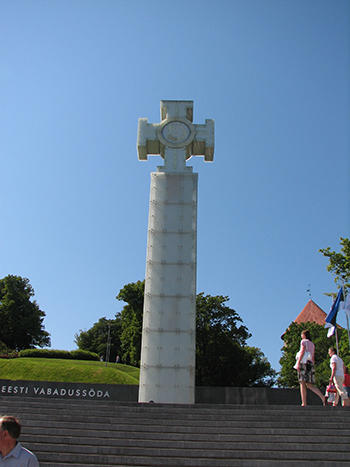
The 'Libertas' monument, Tallinn*
Background
Koemmerling Chemische Fabrik GmbH is a leading international manufacturer of high-quality adhesives and sealants. Its European headquarters and extensive research and development facilities are in Pirmasens, Germany and it has a network of subsidiaries, sales offices and sales partners, in more than 80 different countries. Members of the group have over 110 years experience of the development of adhesives and sealants. In particular the company has established itself as an innovative market leader in provision of Polysulfide, Polyurethane, Silicone and Polyisobutylene sealants for the automotive, insulating glass and photovoltaic industries. In 2013 the company became a group member of Royal Adhesives and Sealants.
Koemmerling Chemische Fabrik has been awarded ISO 9001, ISO 14001 and OHSAS 18001 certification.
For more information visit www.kommerlinguk.com or www.koe-chemie.com
Energy-efficient Warm Edge system enhances living spaces with a view
Large-scale structural glazing façades not only distinguish commercial buildings but are also used increasingly for residential properties.
Glass residential architecture is extremely popular in major US cities. A special project has now been completed in the New York borough of Manhattan. In Hudson Square, a glass tower directly on top of a historic building has created a new and very distinctive living space. In the insulating glass, the highly efficient Warm Edge system from manufacturer H.B. Fuller | KÖMMERLING ensures low energy costs and a comfortable living environment.
Living space is in short supply everywhere. And American cities like New York are in urgent need of housing. Redensification is a viable option for gaining space – not only at ground level but above all in terms of height. At 102 Charlton Street, in Hudson Square on the south side of the block between Greenwich and Hudson Streets, New York real estate company Lalezarian Properties completed a new project in the winter of 2021/2022. A modern residential building with 22 floors was erected on top of an existing five-storey building. Thanks to its unique design, the new building cleverly closes a narrow gap between buildings, blending in visually with the surrounding high rises, while leaving the historic structure of the old building, including its ornate façade, untouched.
Combining historic and modern architecture
Ismael Leyva Architects, based in New York, were responsible for the design. The mid-sized architectural firm undertakes many projects in residential construction as well as in the field of renovation and redesign of historic and heritage-protected buildings. Their design philosophy is based on a combination of functional, aesthetically pleasing and ecologically responsible contemporary design: a portfolio that comes together very elegantly in the new building on Hudson Square.
Apart from its western façade, the 64-metre-high building is entirely glazed. The staggered upper third of the tower jumps back over a sloping line and opens up a distinctive silhouette when viewed from the street. The new building comprises a total of 61 residential units. Of these, the five top floors are designed as full-storey flats. A roof terrace accessible to all residents completes the tower at the top. The common amenities of the residential building also include a lift, a recreation room, lockers for parcels and a bicycle room in the basement. With air conditioning, hardwood floors, energy-efficient electrical appliances and convenient details such as USB charging sockets, the flats are equipped to highest standard. The large, glazed areas let plenty of natural daylight into the spaces while offering unobstructed views of bustling Manhattan.
Elastic edge seal for high energy efficiency
To achieve maximum energy efficiency in the building and to make optimum use of air conditioning in the units, the glazing in the façade is fitted with the Ködispace 4SG Warm Edge system from H.B. Fuller | KÖMMERLING, the adhesives and sealants manufacturer. The reactive thermoplastic spacer for insulating glass ensures the highest possible energy efficiency and maximum service life, combined with a truly unique appearance. Insulating glass with Ködispace 4SG has proven to be exceptionally robust, resilient and durable, as the chemical and elastic bond between sealant and glass creates a tight yet extremely flexible edge seal. As a result, the thermoplastic spacer withstands the temperature extremes between summer and winter common on the American East Coast and reliably keeps moisture from entering the unit. The thermal insulating properties of the glass remain permanently intact. This not only ensures a feel-good atmosphere in the new flats, it also saves the residents heating and air-conditioning costs over the long term.
A unique aesthetic thanks to fully automatic application
The Warm Edge solution not only meets the most stringent requirements for a permanently tight edge seal while maximising living comfort, it also stands out in terms of design. The spacer system is applied to the insulating glass using a fully automated robot. This enables extremely precise production down to a tenth of a millimetre, even with multiple panes – without any disturbing offset of the spacer profiles. Robot-assisted production also enables the creation of unusual window shapes such as the angled glass elements in the new Charlton Street building, or even rounded glazing. The black Ködispace 4SG also eliminates unpleasant light reflections and makes the space between the panes practically invisible – for an unobstructed view to the outside.
For the new development, the glass elements were manufactured by Oldcastle BuildingEnvelope® at its plant in Perrysburg, Ohio. Together with the Warm Edge system from H.B. Fuller | KÖMMERLING, they make a decisive contribution to a comfortable indoor environment, high-quality design and energy efficiency in the new residential building at 102 Charlton Street in New York.
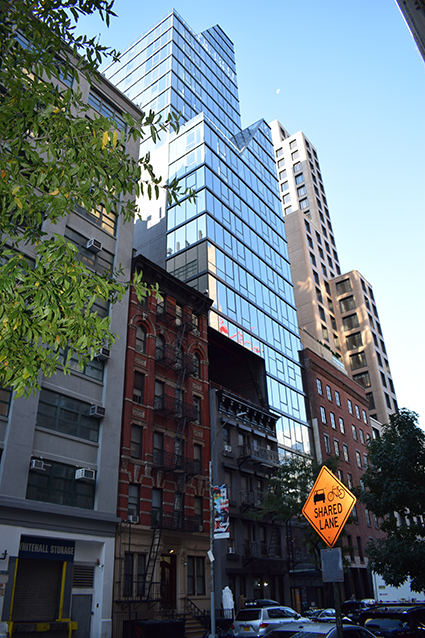
In New York’s Manhattan borough, a large, glazed tower directly on top of a historic building creates new living space.
Image credit: H.B. Fuller | KÖMMERLING

In the insulating glass panes made with the highly efficient Warm Edge system from H.B. Fuller | KÖMMERLING ensures low energy costs and a pleasant living environment.
Image credit: H.B. Fuller | KÖMMERLING
Site plan
Project: 102 Charlton Street, New York, USA
Client: Lalezarian Properties, New York, USA
Architect: Ismael Leyva Architects, New York, USA
Completion date: 2022
Insulating glass manufacturer: Oldcastle BuildingEnvelope®, Perrysburg, USA
Warm Edge: Ködispace 4SG by
H.B. Fuller | KÖMMERLING
About H.B. Fuller | KÖMMERLING
Since 2017, Kömmerling Chemische Fabrik GmbH, as H.B. Fuller | KÖMMERLING, has been part of the US H.B. Fuller adhesives group. With its three business units – Engineering Adhesives, Construction Adhesives and Hygiene, Health and Consumable Adhesives – the world’s largest supplier of adhesives and sealants covers a wide range of demanding adhesive and sealant applications used in a number of industries such as electronics, hygiene, medicine, transport, construction and renewable energies. The international group generates sales of some 3 billion US dollars and has 6,500 employees serving customers in more than 125 countries. The Pirmasens site has become the “Technology Center of Excellence” for insulating glass applications and is therefore responsible for research and development of new products and fields of application as well as for advancing existing expertise.
KOEMMERLING Chemische Fabrik GmbH supports Research at Cambridge University's Glass and Façade Technology Research Group
Koemmerling Chemische Fabrik GmbH announced today that it is supplying both materials and expertise to support several of the research projects currently being undertaken by Cambridge University's Glass and Façade Technology, (gFT), Research Group. The Group, which is led by Dr Mauro Overend, aims to provide solutions to real world challenges in the field of structural glass and façade engineering through fundamental and application-driven research.
Dr Overend said; "We are delighted that Koemmerling has agreed to work with our research group. The company's undoubted R&D expertise combined with its extensive experience of structural glass applications are the perfect complement to our own thinking and desire to take the use of glass to the next level."
"Koemmerling has an excellent reputation for continued investment in research and development at its German headquarters. We are really excited about the opportunities that this agreement presents and look forward to sharing our knowledge and also learning from Dr Overend and his team," commented Chris Davis, Composites Manager at Koemmerling Chemische Fabrik GmbH.
Koemmerling's liquid composite range has recently been refined and several products have already been used successfully in a range of applications including bonding fire glass, bonding multi-layered toughened and textured glass, bonding to manufactured DGU specifications (meeting Low E compliance) and bonding glass and alternative materials together. They are also being utilised in curved glass applications.
UK Website upgraded
The work with Cambridge University coincides with the upgrading of the company's UK website which now includes a new page dedicated to the liquid composite range. It contains strong images of just some of the vast range of applications for which these products are suitable along with a simple table that acts as an initial guide for product selection. To find this information and more details about the company's entire range visit www.kommerlinguk.com
November 11, 2013
Request further information and send a copy of your publication to:
Kömmerling Chemische Fabrik GmbH
Dr. Knut Göke
Zweibrücker Str. 200
66954 Pirmasens
Germany
Phone: +49 6331 56-2330
Fax: +49 6331 56-1110
E-Mail: marketing@koe-chemie.de
www.koe-chemie.de
Background
The gFT Research Group consists of a core research team based at the Department of Engineering, University of Cambridge supported by a multi-disciplinary network of collaborators in other research centres and in industry. This set-up enables the group to approach problems and identify opportunities across the disciplines.
The group was founded by Dr Mauro Overend in 2005 and was originally based at the University of Nottingham. The group moved to the University of Cambridge in 2007. For more information about the gFT research group visit http://www-g.eng.cam.ac.uk/gft/
Koemmerling Chemische Fabrik GmbH is a leading international manufacturer of high-quality adhesives and sealants. Its European headquarters and extensive research and development facilities are in Pirmasens, Germany and it has a network of subsidiaries, sales offices and sales partners, in more than 80 different countries. Members of the group have over 110 years experience of the development of adhesives and sealants. In particular the company has established itself as an innovative market leader in provision of Polysulfide, Polyurethane, Silicone and Polyisobutylene sealants for the insulating glass, photovoltaic, and automotive industries.
Koemmerling Chemische Fabrik has been awarded ISO 9001, ISO 14001 and OHSAS 18001 certification.
For more information visit www.kommerlinguk.com or www.koe-chemie.com
$1.575 billion acquisition expected to create significant shareholder value while enhancing 2020 plan
ST. PAUL, Minn., Sept. 04, 2017 (GLOBE NEWSWIRE) -- H.B. Fuller Company (NYSE:FUL) announced today that it has signed an agreement to purchase Royal Adhesives & Sealants, a leading manufacturer of high-value specialty adhesives and sealants. This business consistently delivers industry-leading growth rates, EBITDA margins, and free cash flow that are expected to enhance H.B. Fuller’s position as a global leader in the adhesives industry.
“This accretive acquisition accelerates realization of our 2020 strategic objective to focus and grow in engineering adhesives and other highly specified market segments, while exceeding our targeted cash flow, EPS and EBITDA margin targets,” says H.B. Fuller President and Chief Executive Officer Jim Owens. “With Royal’s strong customer relationships and experienced team, we will add depth and breadth to our portfolio. Royal’s complementary offerings will expand our presence in North America, Europe and China, and add new technology and capabilities. We have identified $35 million in cost synergies and $15 million in growth synergies that we expect to realize over the next three years as a result of merging these two great adhesives businesses. Upon closing the transaction, H.B. Fuller will be a company with nearly $2.9 billion in revenue, focused on profitable growth in attractive engineering, durable assembly, and construction adhesives markets.”
Royal is expected to generate approximately $650 million in revenue and $138 million in adjusted EBITDA for H.B. Fuller’s fiscal year 2017. The company operates 19 manufacturing facilities in 5 countries, and employs approximately 1,500 people globally.
The agreed upon purchase price is $1,575 million, subject to customary adjustments. H.B. Fuller intends to finance the transaction through new debt financing.
H.B. Fuller has previously announced specific financial goals for organic growth, cash flow and EBITDA margin improvement in the company’s 2020 strategic plan and believes this acquisition will support acceleration and over performance relative to these objectives. Royal is a highly respected supplier of industrial adhesives in a diverse set of end markets, including aerospace, transportation, commercial roofing, insulating glass, solar, packaging and flooring applications. With this acquisition, H.B. Fuller will gain product technology and add people and skills that will result in a more capable and dynamic company for customers and employees. H.B. Fuller remains committed to maintaining its current dividend and rapid deleveraging using the significant free cash flow it expects to have available for this purpose.
Subject to customary closing conditions and regulatory approvals, the transaction is expected to close as soon as October of 2017. Morgan Stanley & Co. LLC is acting as H.B. Fuller’s sole financial advisor in relation to this acquisition, and Faegre Baker Daniels LLP is acting as H.B. Fuller’s legal counsel. H.B. Fuller is acquiring Royal from affiliates of American Securities LLC, based in New York with an office in Shanghai.
H.B. Fuller will host a conference call to review this announcement at 8:30 a.m. U.S. Central (9:30 a.m. Eastern) on September 5, 2017. The conference call audio and accompanying presentation slides will be available to all interested parties via a simultaneous webcast at www.hbfuller.com under the Investor Relations section. The conference also call can be accessed by dialing 888-394-8218 or +1-719-325-2226 for international callers. The access code is 5132943. The event is scheduled to last for one hour. For those unable to listen live, an audio replay of the event, along with the accompanying presentation, will be archived on the company’s website.
Safe Harbor for Forward-Looking Statements:
Certain statements in this document may be considered forward-looking statements within the meaning of the Private Securities Litigation Reform Act of 1995. These statements are subject to various risks and uncertainties, including but not limited to the following: risks to consummation of the transaction, including the risk that the transaction will not be consummated within the expected time period or at all, the risk that conditions to the closing of the transaction, including receipt of required regulatory approvals, may not be satisfied, and the risk that the transaction may be terminated in circumstances requiring us to pay the $78.75 million termination fee; the transaction may involve unexpected costs, liabilities or delays; our business or stock price may suffer as a result of uncertainty surrounding the transaction; we may be unable to secure the financing necessary for the transaction on favorable terms, or at all; the substantial amount of debt we would incur to finance our acquisition of Royal, our ability to repay or refinance it or incur additional debt in the future, our need for a significant amount of cash to service and repay the debt and to pay dividends on our common stock, and the effect of restrictions to be contained in our debt agreements that limit the discretion of management in operating the business or ability to pay dividends; various risks to stockholders of not receiving dividends and risks to our ability to pursue growth opportunities if we continue to pay dividends according to the current dividend policy; we may be unable to achieve expected synergies and operating efficiencies from the transaction within the expected time frames or at all; we may be unable to successfully integrate Royal’s operations into our own, or such integration may be more difficult, time consuming or costly than expected; following the transaction, revenues may be lower than expected, and operating costs, customer loss and business disruption (including, without limitation, difficulties in maintaining relationships with employees, customers, clients or suppliers) may be greater than expected; the outcome of any legal proceedings related to the transaction; risks that the pending transaction disrupts current plans and operations and the potential difficulties in employee retention as a result of the pending transaction; the ability to effectively implement Project ONE; political and economic conditions; product demand; competitive products and pricing; costs of and savings from restructuring initiatives; geographic and product mix; availability and price of raw materials; the Company’s relationships with its major customers and suppliers; changes in tax laws and tariffs; devaluations and other foreign exchange rate fluctuations; the impact of litigation and environmental matters; the effect of new accounting pronouncements and accounting charges and credits; and similar matters. Further information about the various risks and uncertainties can be found in the Company’s SEC 10-K filing for the fiscal year ended December 3, 2016. All forward-looking information represents management’s best judgment as of this date based on information currently available that in the future may prove to have been inaccurate. Additionally, the variety of products sold by the Company and the regions where the Company does business make it difficult to determine with certainty the increases or decreases in net revenue resulting from changes in the volume of products sold, currency impact, changes in product mix, and selling prices. However, management’s best estimates of these changes as well as changes in other factors have been included.
About H.B. Fuller Company:
For 130 years, H.B. Fuller has been a leading global adhesives provider focusing on perfecting adhesives, sealants and other specialty chemical products to improve products and lives. With fiscal 2016 net revenue of $2.1 billion, H.B. Fuller’s commitment to innovation brings together people, products and processes that answer and solve some of the world’s biggest challenges. Our reliable, responsive service creates lasting, rewarding connections with customers in electronics, disposable hygiene, medical, transportation, clean energy, packaging, construction, woodworking, general industries and other consumer businesses. And our promise to our people connects them with opportunities to innovate and thrive. For more information, visit us at www.hbfuller.com and subscribe to our blog.
About Royal Adhesives & Sealants:
Royal Adhesives & Sealants is a global developer and manufacturer of proprietary, high-performance adhesives and sealants. Headquartered in South Bend, Indiana, Royal offers a broad range of specialty formulated products designed to solve complex bonding, laminating and sealing applications across a diverse range of markets including aerospace and defense, construction, specialty packaging, automotive and industrial. The company offers a broad spectrum of customized thermosetting epoxy and urethane, solvent-based and water-based technologies to meet the most demanding adhesive and sealant applications. For additional information on Royal, please visit www.royaladhesives.com.
ST. PAUL, Minn. - Oct. 22, 2017 – Boosting H.B. Fuller's problem-solving potential, the company today announces it has finalized its acquisition of Royal Adhesives & Sealants for $1.575 billion. Few people realize the impact of adhesives. They are everywhere, making virtually any durable or consumer product better. Adhesives have the potential to make the world a better place, and H.B. Fuller is tapping adhesives in unique ways to improve a range of global issues.
H.B. Fuller, combined with Royal, deepens its expertise in specialty and high-value applications used in a range of sectors, including electronics, hygiene, medical, transportation, clean energy, construction, and more. Together, the companies will enable an interconnected world, support better use of the world’s finite resources, improve food security and access to clean drinking water, and address the challenges of a globally disperse and aging population.
“This is an exciting step for Royal and our network of brands,” said Royal Adhesives & Sealants CEO, Ted Clark. “Combining these two businesses creates a more capable and dynamic company for our customers and employees. We complement each other, selling in adjacent markets with very little customer overlap, and that presents an interesting number of growth opportunities. We offer different technologies, expertise and capabilities. Yet, we share the same passion for solving product development challenges by discovering and applying innovations in adhesive technology.”
The acquisition expands H.B. Fuller’s product offering in engineering, durable assembly and construction adhesives and makes H.B. Fuller the world’s largest supplier of adhesives for insulating glass and commercial roofing applications. Of the top adhesives manufacturers,
H.B. Fuller is the only one singularly focused on adhesive and sealant technologies.
“We are passionate about being the best adhesives provider in the world, and we’ve been investing significantly over the last decade to make it a reality,” said H.B. Fuller CEO Jim Owens. “With complementary adhesives expertise from Royal, we’re able to make an even bigger impact on improving people’s lives. Our customers will benefit from a broader portfolio and expanded development and production capabilities. We’ll be a more capable and dynamic company with additional opportunities for the thousands of dedicated H.B. Fuller and Royal employees around the world. And, the acquisition accelerates our business strategy and positions us to exceed our 2020 targets.”
H.B. Fuller also expects the combined businesses to deliver very strong cash flow to pay down debt at an accelerated pace. Owens adds, “With this acquisition, we have created immediate value for shareholders based on Royal’s solid organic growth track record, high EBITDA margin and strong rate of cash flow conversion. Looking ahead, we will now begin our planned three-year integration, including leveraging the $15 million in growth synergies and $35 million in cost synergies we identified prior to closing this transaction.
A broader range of highly specified adhesives technologies
With the addition of Royal, H.B. Fuller will be able to add more value to its customers in key markets that require highly specified adhesive technology. The combined companies’ comprehensive suite of products support innovative product design with the potential to touch everything from our clothes, homes and workspaces to how we communicate and travel.
For example, the electronification of cars has revolutionized vehicles from mechanical machines to electronic devices, and it is changing how vehicles are manufactured and serviced. Together, H.B. Fuller and Royal now bring the whole package to OEMs – from electronics applications, interior trim, and interior and exterior lighting to powertrain under the hood and exterior structural bonding. Royal also brings rubber-to-metal bonding adhesives, a highly difficult application in the automotive industry.
From engineered wood applications and panel lamination to advancements in insulating glass, H.B. Fuller now has one of the world’s most complete lines of durable assembly adhesive offerings. The acquisition of Royal’s KÖMMERLING business—a well-established and respected provider of insulating glass and other high-value adhesive and sealant applications for manufacturers of durable goods—will enable us to leverage its well-established sales channels to deliver this technology to a broader range of customers in North America and to accelerate the introduction of insulating glass sealant innovations in China and the Asia Pacific region.
The acquisition also nearly doubles the size of H.B. Fuller’s construction adhesives portfolio. Adding to H.B. Fuller’s expertise in tile setting and flooring installation, Royal is the market leader in the commercial low-slope roofing category. They also add capabilities in insulation attachment and waterproof bonding. Collectively, H.B. Fuller now advances quality building construction from the floor to the roof.
H.B. Fuller has acquired Royal from affiliates of American Securities LLC, based in New York with an office in Shanghai. To learn more about the transaction, visit www.hbfuller.com/royal.
KOMMERLING and G-Smatt Glass consolidate their relationship with a series of exploratory meetings with key UK engineers and architects.
Eckersley O'Callaghan team enthused by possibilities opened up by 'architainment' glass. New glass laminating resin developed to overcome challenges.
G-Smatt Glass, CEO Ho Joon Lee, was joined by Chris Davis of Kommerling for a series of high level meetings in the UK as G-Smatt starts to plan its move into the UK and wider European markets. The two companies have worked closely over the last few years to develop a ground breaking construction grade laminated glass with minute LEDs that bestows the glass with media functionality.
"We have now successfully installed our product in over 50 different buildings in the Far East and Asia. It has been well received and is transforming buildings that were eyesores into destination city landmarks. With the continuing investment in new developments both in London and other major metropolitan centres we feel that it is the right time to start making the key players aware of this product's potential. Not only does it deliver on all the construction criteria but it will enable the shell of a building to generate more profit for the developer if used correctly," explained Ho Joon.
One of the organisations that was privy to a full presentation about the products capabilities was Eckersley O'Callaghan where more than a dozen engineers were able to see videos of existing installations and find out more about the possibilities offered by this construction grade glass, with benefits. "This glass will allow us as engineers to deliver buildings and facades that have a dynamic appeal. The impact that an installation of this type will have on the surrounding cityscape is hard to evaluate but there is the potential to put more traditional media displays and external lighting installations in the shade," commented Sanmukh Bawa, engineer with the company. Other companies also showing an interest in the product include Arups, Hamilton-Erskine and ICON.
G-Smatt also have plans in place to open an office in Los Angeles later this summer to serve the American market.
The small LEDs are placed at regular intervals approx 40-90mm apart, depending on the specification and when viewed from the inside there is less than 0.3% reduction in visibility through the glass. This is considerably less than when one of the current alternatives such as an overlay or frame structure is used which can give the impression of being in a cage or prison cell when viewed by the building's occupants. Even when illuminated at night people within the building will not be dazzled by reflection as less than 10% of the light emitted by the LED's is reflected back into the building.
The science within the glass
Kommerling has worked closely with G-Smatt's development team to make this innovative glass a commercial reality. The company's R&D team in Pirmasens, Germany has developed a new formulation for the resin that is used to bond the two layers of glass around the encapsulated LEDs. There were several complex issues that had to be accommodated, namely:
- a passive curing profile was required to avoid high temperatures and pressures damaging the embedded LED and FPCB components. - the resin had to be compatible with and not compromised by the presence of the adhesives used to secure the LEDs
- the conductive adhesive that fixes FPCBs onto the FTO coated glass would be dissolved by a traditional glazing sealant
and finally the resin had to have a similar refractive index as the glass and was required to cure without any bubbles, otherwise these would become greatly illuminated once the LEDs were lit on.
Source: Koemmerling, January 27, 2015
Background
Koemmerling Chemische Fabrik GmbH is a leading international manufacturer of high-quality adhesives and sealants. Its European headquarters and extensive research and development facilities are in Pirmasens, Germany and it has a network of subsidiaries, sales offices and sales partners, in more than 80 different countries. Members of the group have over 110 years experience of the development of adhesives and sealants. In particular the company has established itself as an innovative market leader in provision of Polysulfide, Polyurethane, Silicone and Polyisobutylene sealants for the automotive, insulating glass and photovoltaic industries. In 2013 the company became a group member of Royal Adhesives and Sealants.
Koemmerling Chemische Fabrik has been awarded ISO 9001, ISO 14001 and OHSAS 18001 certification.
For more information visit www.kommerlinguk.com or www.koe-chemie.com
Request further information and send a copy of your publication to:
Kömmerling Chemische Fabrik GmbH
Dr. Knut Göke
Zweibrücker Str. 200
66954 Pirmasens
Germany
Phone: +49 6331 56-2330
Fax: +49 6331 56-1110
E-Mail: marketing@koe-chemie.de
www.koe-chemie.de

